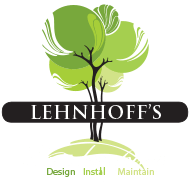Last week at Lehnhoff’s, we talked about the benefits of going native – that is, with your plant selections. We know that avoiding alien species in favor of ones naturally adapted to your region can benefit the ecosystem in a variety of ways. But once you’ve made the decision to select sustainable species, where do you begin?
This week, we’re offering the rundown on just a few of our favorite native plants of Maryland to help you avoid invasives and come face to face with local plant varieties.
Vines: These woody and herbaceous plants slink and spread over your soil or climb up trellises and fences, preventing weeds and erosion and adding visual interest to your landscape. Check out these alternatives to the overgrown and invasive English Ivy, Japanese Honeysuckle, and Kudzu so commonly seen throughout Maryland.
- Virginia Creeper (Parthenocissus quinquefolia): The flowers on this plant bloom into a gloriously deep purple with white mixed in, and come autumn, the entire vine will turn crimson. An adaptable trailing plant, Virginia Creeper does well in a variety of light and shade conditions and grows quickly.
- Trumpet Vine (Campsis radicans): Known for attracting hummingbirds, the Trumpet Vine’s horn-shaped flowers are a pinkish orange from July through September. They thrive in full sun and dry areas.
Trees: Oftentimes invasive trees, like the Russian Olive and White Mulberry, spread and grow where natives could be, suffocating the growth of beneficial Maryland plants. Here are just a couple attractive alternatives to alien species.
- Paw Paw (Asimina triloba): Growing best in full sun with plenty of moisture, the Paw Paw has flowers that range from yellow to red and bears an edible fruit that is one of the largest indigenous fruits of the U.S. It’s taste and appearance has been made comparable to the mango, with a custardy taste.
- Sassafrass (Sassafras albidum): The Sassafrass does well in full or partial sunlight with well-drained soil, and can be identified by its mitten-shaped leaves. It is an aromatic tree with dark green leaves that change yellow in the fall.
- Red Maple (Acer rubrum): One of the most common deciduous trees to the Eastern United States, the Red Maple, appropriately, is well known for its lusciously red leaves in autumn. It grows quickly and serves as a good shade tree.
At Lehnhoff’s Landscaping, we can work with local nurseries to incorporate Maryland native plants into your yard or garden, bringing you one step closer towards preserving the region’s natural habitats.
If you have any questions, please contact Lehnhoff’s Landscaping by calling 443.921.5789 or visit LehnoffsLandscaping.com today!
Rob Lehnhoff meets directly with every prospective client to see the space and hear the vision straight from you, the homeowner. Lehnhoff is committed not only to quality work, but to excellent customer service. We guarantee that there will always be a person onsite who can communicate directly with you as well as make any necessary decisions.
In most cases, Rob himself is onsite for the duration of a project. Periodically, during the installation, we sit down with you to ensure that the project is coming along to expectation. This way, we can tweak things along the way if need be. It’s our job to make sure you are happy with the final product.
We have day and evening times available to fit your schedule.
You can also follow Lehnhoff’s Landscaping on Facebook, Twitter, and Google+.
Sources:
